
'If a leaf is plucked today, it will sprout a new one tomorrow.'
The Ashitaba(明日葉) is written in kanji with such a meaning.
In English, it's tommorow's leaf.
In fact, it won't sprout in a day or two.
However, the Ashitaba has such vitality that it can be compared to that.
I would like to share about Ashitaba, which has such a vigorous vitality.

Contents of this article
Instagram@ashitabahime
I moved to Hachijo-jima in March 2015 to grow Ashitaba.
What is Ashitaba?

| Place of origin | JAPAN |
|---|---|
| Scientific name | Angelica keiskei |
| Classification family | Apiaceae(carrots, celery, etc.) |
| Characteristic | Contains chalcone (a yellow pigment), a precursor to flavonoids |
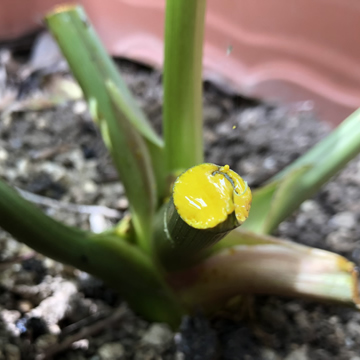
The Ashitaba (Angelica keiskei) is a perennial plant of the Ashitaba (Angelica) genus of the Apiaceae family native to Japan.
Details
It grows naturally along the seashore and in the mountains such as the Izu Islands, Boso Peninsula, Miura Peninsula, Izu Peninsula, and Kii Peninsula. On Hachijojima, where I live, it grows naturally and is cultivated. Due to the warm Kuroshio current, Hachijojima has a climate that is relatively warm in the winter, cool in the summer, and a significant amount of annual rainfall.
Climate of Hachijojima where I live : https://en.wikipedia.org/wiki/Hachijo-jima
Types of Ashitaba
Broadly speaking, there are two types of petioles, one with green color and the other with red, but there are also intermediate colors.
Ashitaba is rich in nutrition
The nutrients of the Ashitaba are rich in vitamin, minerals, and dietary fiber.
As a characteristic ingredient, there is the chalcone, a type of polyphenol.
It is a yellow pigment that oozes from the cut end of the stem.
Reference:STANDARD TABLES OF FOOD COMPOSITION IN JAPAN - 2015 - (Seventh Revised Edition)
https://www.mext.go.jp/en/policy/science_technology/policy/title01/detail01/sdetail01/sdetail01/1385122.htm (English version of Excel data is available.)
The Item No. for ashitaba is 06005.
【Ashitaba 100g】

| unit | Angelica, "Ashitaba", stems and leaves, raw (No.06005) |
Spinach, leaves, all season, raw (No.06267) |
|
|---|---|---|---|
| Protein, calculated from reference nitrogen | g/100g | 3.3g | 2.2g |
| Dietary fiber, total | g/100g | 5.6g | 2.8g |
| Dietary fiber, soluble | g/100g | 1.5g | 0.7g |
| Dietary fiber, insoluble | g/100g | 4.1g | 2.1g |
| Sodium | mg/100g | 60mg | 16mg |
| Potassium | mg/100g | 540mg | 690mg |
| Calcium | mg/100g | 65mg | 49mg |
| Magnesium | mg/100g | 26mg | 69mg |
| Iron | mg/100g | 1.0mg | 2.0mg |
| Zinc | mg/100g | 0.6mg | 0.7mg |
| beta-Carotene | μg/100g | 5300μg | 4200μg |
| Vitamin K | μg/100g | 500μg | 270μg |
| Thiamin | mg/100g | 0.10mg | 0.11mg |
| Riboflavin | mg/100g | 0.24mg | 0.20mg |
| Niacin | mg/100g | 1.4mg | 0.6mg |
| Vitamin B-6 | mg/100g | 0.16mg | 0.14mg |
| Folate | μg/100g | 100μg | 210μg |
| Ascorbic acid | mg/100g | 41mg | 35mg |
Details

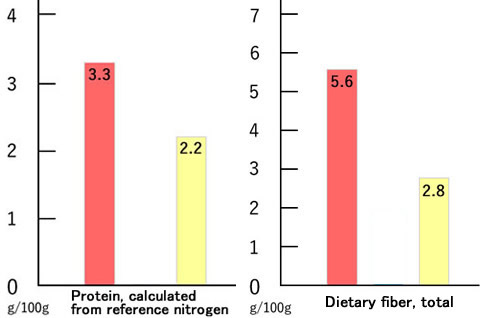
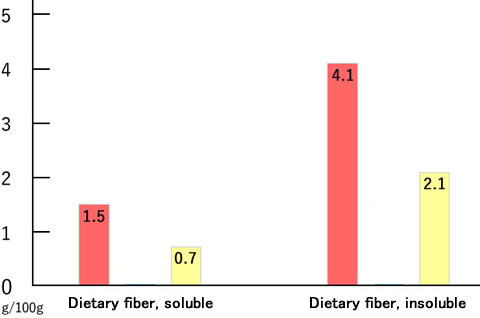
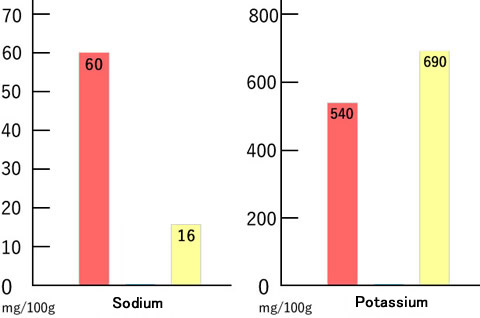
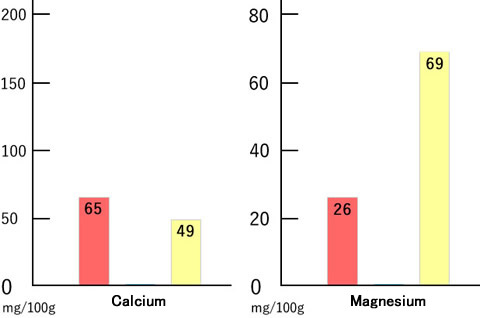
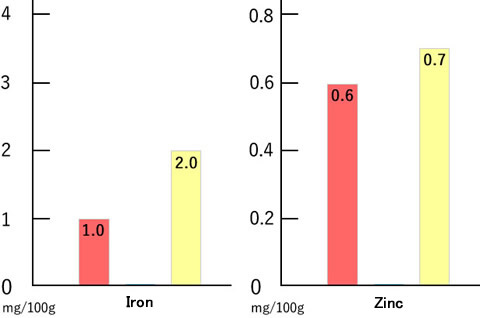

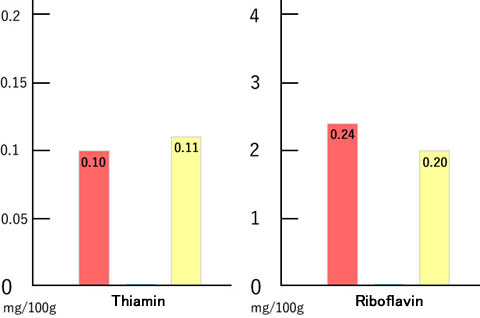
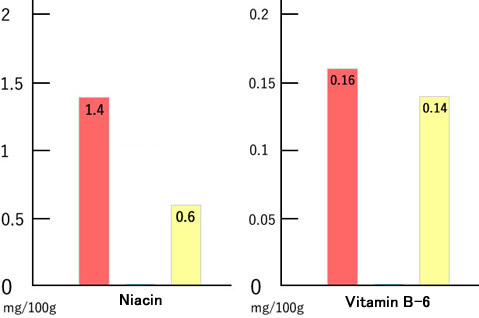

How to eat ashitaba deliciously
the Ashitaba leaves have a unique bitterness and aroma.
Details
For those concerned about the bitterness and aroma, boiling in water for about 1 minute and exposing to cold water will alleviate the attributes. As it goes well with oil, tempura and stir fry and dressed ashitaba foods are recommended.
About the growth of Ashitaba
For the Ashitaba, it is said that the optimal temperature for germination is 10℃ to 15℃, and the optimal temperature for growth is approximately 15℃.
Details
Growth is suppressed under strong sunlight, high temperatures, and low temperature. It dislikes excessively strong sunshine. In summer when the temperature exceeds 25℃, the growth will wane, and if the temperature exceeds 30℃ for an extended period and dried, the color of the leaves will fade. Also, when the minimum temperature drops below 5℃, growth is hindered, making sprouting more difficult.
It usually germinates and continues to grow for 2 to 5 years, and after becoming an old plant, the flower blooms and seeds will develop.
Mixed cultivation with Alnus sieboldiana
Alnus sieboldiana is a deciduous tree whose roots coexist with rhizobia.
- How to Harvest Ashitaba
- We usually harvest the soft new leaves (glossy leaves) which have begun to open or almost fully opened. Cut back the stem, leaving about 5cm from the base of the stem. When you harvest, make sure that the plants always have more than two old stems. Once the oldest stem have withered, leave time between harvests. Harvest new stem always leaving more than two old stems.?I recommend to harvest in spring or autumn when Ashitaba is in its most active growth phase.
- I will harvest the ashitaba that I planted last time!⏳1:15

